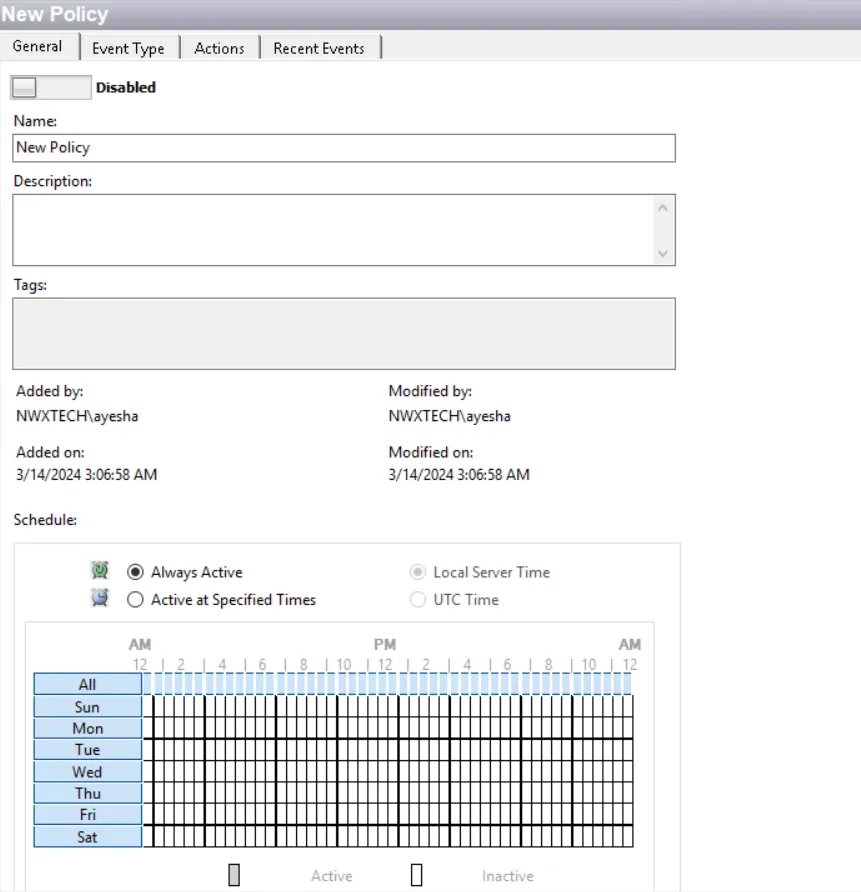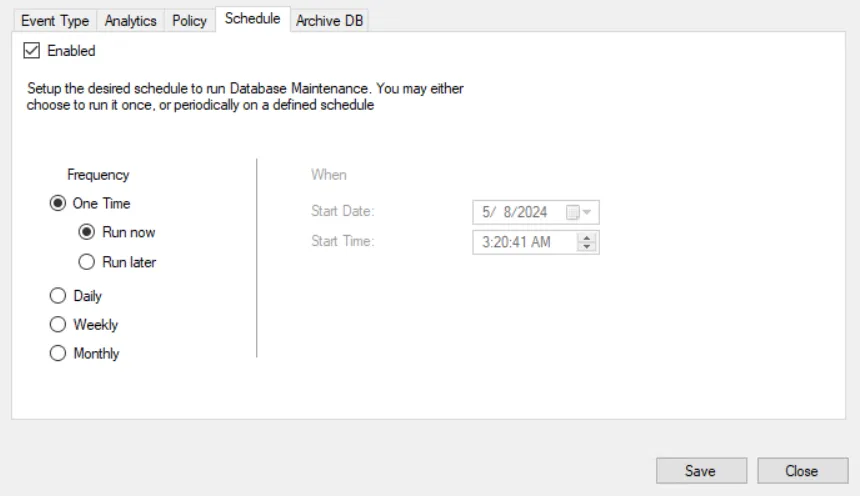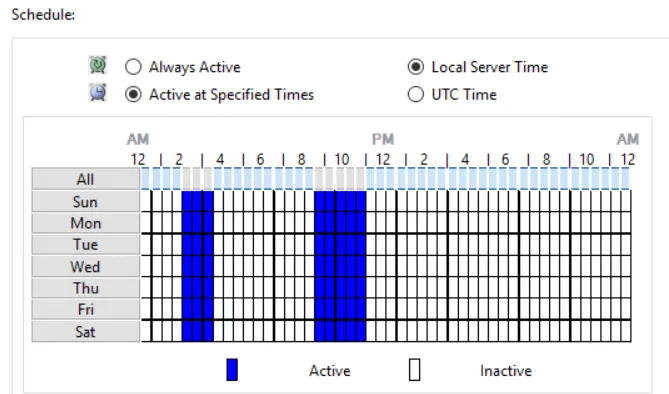General Tab
The General tab is for editing the basic attributes of the template.

Name
The name should be unique and descriptive. It is displayed for a template in the list on the Templates Interface.
Description
The description is optional but recommended. Since each policy can be configured to be as broad or narrow as desired, the name combined with the description should clearly explain what objects and events it monitors/blocks, where in the network it looks, and when it is active. The description is displayed for a template in the list on the Templates Interface.
All changes made to a template must be saved before leaving the configuration interface.
Tags
Tags are enabled as an organizational tool for templates only. Many preconfigured templates have tags that enable users to quickly find a desired template through various groupings. Tags do not create a duplicate template, but rather display the template in different folders under the TAGS node. Multiple tags can be identified for a template with a comma-separated list. New tags can be created, which create a new folder under the TAGS node. Use the right-click Refresh option on the TAGS node in the Navigation pane to display new tags and/or display template-tag modifications. See the Tags Node topic for additional information.
History
History details in the center of the General tab are automatically populated on creation or modification.
It contains read-only information on who created the template (Added by), when the template was created (Added on), who made the latest modification (Modified by), and when the latest modification occurred (Modified on).
Schedule
The schedule is for setting the time period for an enabled policy to monitor or block events.
| Icon | Label | Represents |
|---|---|---|
| Always Active | Indicates the policy will be active at all times when enabled. This is the default setting | |
| Active at Specified Times | Indicates the policy will be active only at the specified times when enabled. There are two options for setting the specified times: - Local Server Time – Schedule is set according to the local server’s time - UTC Time – Schedule is set according to the Universal Time (UTC) |
Any new policy created from a template automatically applies the template’s setting, which can then be modified as desired. Schedule details are displayed for a template in the list on the Templates Interface. Active at Specified Times is represented by a clock icon, and Always Active is represented with no icon, or blank.
Weekly Calendar
The weekly calendar at the bottom of the schedule section is where the schedule is set.

When the schedule is set to Always Active, the weekly calendar is grayed-out.

When the schedule is set to Active at Specified Times, the weekly calendar is enabled. Each block of time on the calendar represents a 30-minute period.
- Blue blocks – Active times for the enabled policy
- White blocks– Inactive times for the enabled policy
The schedule can be set or modified in one of the following ways:
- Click an individual time-block to toggle between active and inactive for a single 30-minute period.
- Click a time-block in the All row to toggle between active and inactive for an entire column (for all days of the week).
- Click the name of a day to toggle between active and inactive for an entire row (for a full day).